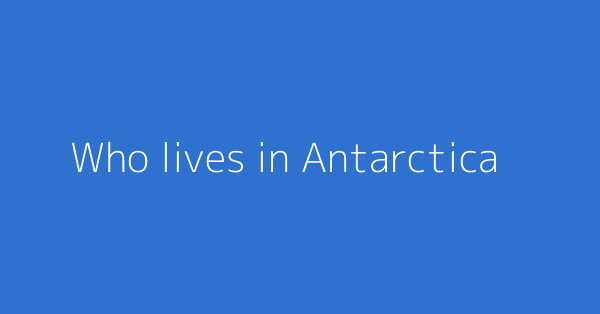There are no countries on Antarctica and no permanent population. Many countries support scientific research stations on Antarctica. The South Pole is located on the continent of Antarctica. Because Antarctica is a polar region, one with no precipitation, it has no lakes or rivers and is in fact Earths driest continent. Average temperatures in the Antarctic interior get down to -70 degrees Celsius during the winter months and -35 degrees Celsius in the warmer months. The coastal temperatures are much warmer with a range of -15 to -32 Celsius in Winter and -5 to 5 Celsius in Summer. The interior of Antarctica is considered the worlds driest desert because the extreme cold freezes water vapour out of the air. Annual snowfall on the polar plateau is equivalent to less than 5 cm of rain. The Antarctic Treaty governs its use and management. It contains no significant vegetation: it does not rain, it is permanently covered in an ice pack up to 4 Km thick, it has the coldest recorded temperature anywhere in the world (-89.5 C), with katabatic winds reaching to 320 kph. Antarctica is colder and more heavily glaciated than any other continent, and it has no permanent residents, although there is a scientific research station there. A number of nations have made territorial claims on portions of Antarctica, however, there are no countries there, unlike other continents. When you enter Antarctica, there is no Immigration and customs procedure once you have cleared the immigration and customs of the last country you visited en route to the continent. It was the last continent to be discovered and have humans set foot on it. Apart from all that, it is pretty ordinary.
Who lives in Antarctica?
-
Who lives in Antarctica?
-
There are no native human populations in Antarctica. Only researchers and support staff from many different nations live there for a time while they are doing their work. Its not a particularly hospitable place.People live on the Antarctic continent because they have jobs representing their governments. Governments pursue science in Antarctica, and support scientists interested in the study the health of planet earth.There are no countries on Antarctica and no permanent population. Many countries have scientific research stations on Antarctica, most of which are only manned during the summer months.
What is discussplaces?
DiscussPlaces is a place to make new friends and share your passions and interests. Quench your thirst for knowledge, discuss places with other aficionados, and swap recommendations. Are you an aspiring foodie who dreams of living in New York? Or perhaps you are looking for the best chicken wings in Cincinnati? Then this is the place for you! Any one can join in with a passion or interest – whether it be talking about their favorite restaurant in Barcelona or raving about their latest trip to Italy. Join us!

This page shows discussions around "Who lives in Antarctica?"
This page shows discussions around "Who lives in Antarctica?"